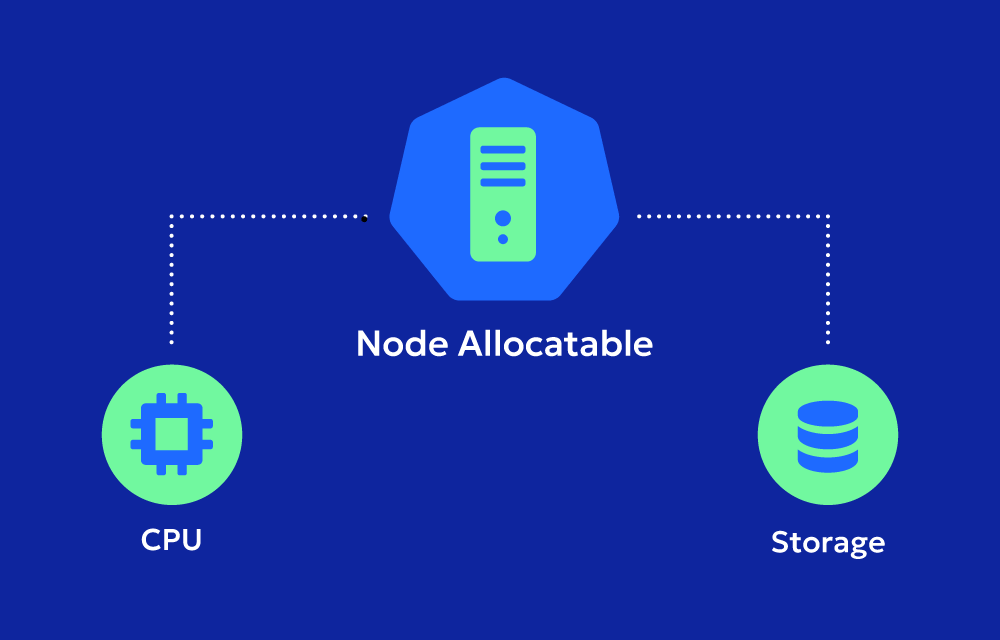How Does It Work?
Node Allocatable functions by reserving a portion of a node’s resources specifically for system processes and Kubernetes components. This reservation is configured using parameters like kube-reserved for Kubernetes system daemons, system-reserved for non-Kubernetes processes, and eviction-thresholds to handle critical scenarios. By setting aside these resources, Node Allocatable ensures that the remaining capacity is accurately reported to the Kubernetes scheduler, allowing it to place workloads without overloading the node. This mechanism prevents resource contention and promotes stable cluster operations.
When Is It Used?
Node Allocatable is used in scenarios where resource management and stability are crucial. Common use cases include:
- High-Performance Clusters: Ensuring system daemons and Kubernetes agents operate reliably in environments with heavy workloads.
- Resource-Constrained Nodes: Preventing system failures by reserving sufficient resources for essential processes on smaller nodes.
- Workload Optimization: Scheduling workloads based on accurate resource availability to reduce crashes and improve performance.
- Production Environments: Maintaining predictability and efficiency in resource allocation for mission-critical applications.
Key Features:
- Resource Reservation: Kubernetes reserves resources for system processes using configurations like
kube-reserved,system-reserved, andeviction-thresholds. - Dynamic Adjustments: Administrators can fine-tune Node Allocatable configurations based on workload requirements and node usage patterns.
- Integration with Scheduler: The Kubernetes scheduler respects Node Allocatable when placing pods, ensuring that workloads fit within available resources.
Types of Resource Reservations:
- Kube-Reserved: Resources set aside for Kubernetes system daemons like the kubelet, container runtime, and kube-proxy.
- System-Reserved: Resources allocated for non-Kubernetes system processes, such as the OS kernel, logging agents, or monitoring tools.
- Eviction Thresholds: Defines when Kubernetes can evict pods to prevent resource starvation for critical processes.
Challenges:
- Configuration Complexity: Determining appropriate resource reservations for system daemons can be complex and may require fine-tuning.
- Over-reservation Risks: Over-reserving resources reduces the capacity available for workloads, potentially leading to underutilization.
- Monitoring: Ensuring Node Allocatable values are accurately set and maintained requires consistent monitoring and updates.



